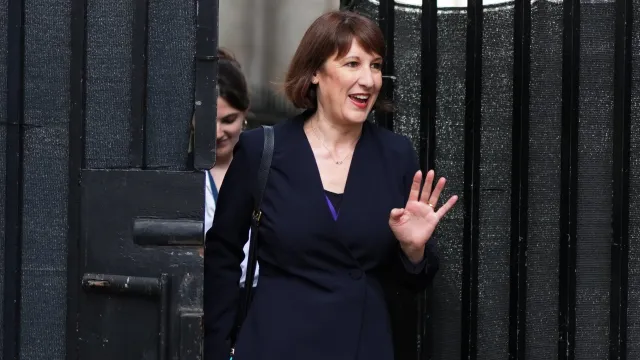Rachel Reeves, the UK chancellor, is reportedly considering £3 billion in welfare cuts over the next four years by tightening access to sickness benefits.
This move comes as the Labour government seeks to address a £22 billion deficit left by the previous Conservative administration. The proposed cuts are part of a broader cost-cutting mission aimed at stabilizing the nation’s finances.
Reeves is expected to save this £3bn by adhering to the previous government’s plan to reform work capability assessments, which could see around 400,000 long-term sickness claimants re-evaluated by 2028/29.
Under these changes, claimants could be required to prepare for employment and would also see a reduction of £260 per month in benefits.
Critics argue that the proposed welfare cuts could push vulnerable individuals deeper into poverty. During her time in opposition, Liz Kendall, the Labour Work and Pensions secretary, described the reforms as merely “tinkering at the edges of a failing system.”
The backdrop to this discussion is a sharp rise in the number of people claiming sickness benefits, with 2.8 million Britons currently out of work due to long-term illness. By the end of the parliamentary term, the total cost of benefits for working-age individuals is projected to reach £64 billion, a sharp increase of £30 billion from pre-pandemic levels.
Disability charities, in particular, have voiced strong opposition to the potential cuts. Scope, a leading disability charity, has warned of the devastating impact these reforms could have on disabled individuals.
James Taylor, a spokesperson for the charity, criticized the plans, stating: “Cutting support to those who need it most will lead to even more disabled people living in poverty.” He urged the government to “work with disabled people to fix our broken welfare system, rather than making it more punitive.”
Budget Cuts and Tax Hikes on the Horizon
The October 30 budget is expected to deliver up to £40 billion through spending cuts and tax increases. Reports suggest that some departments could face cuts as severe as 20%. Reeves is looking to fill the £22 billion gap left in public finances but has also promised an additional £18 billion to fund critical areas like the NHS and prevent real-term cuts to essential services.
Despite assurances that Labour would not return to the era of austerity, Reeves told Cabinet ministers that the proposed measures would merely “keep public services standing still.”
The planned welfare cuts and broader austerity measures have caused concern among several ministers, some of whom expressed their discontent directly to Prime Minister Sir Keir Starmer.

As negotiations continue with individual government departments, tensions are rising. While Reeves and Starmer have agreed on the significant aspects of the budget, including the overall “spending envelope,” many departments are still lobbying for a bigger share of the pie.
Downing Street, however, has made it clear that “tough decisions” will be necessary, with officials warning that “not every department will be able to do everything they want to.”
The government is also exploring new tax measures to raise funds. A widely anticipated move is the increase in the employer rate of national insurance. While this would generate significant revenue, it could also be seen as a breach of Labour’s general election manifesto, which has promised not to raise taxes on working families.
As the deadline for the budget approaches, Reeves faces the challenge of balancing fiscal responsibility with protecting the most vulnerable in society. With ministers pushing back and charities voicing concern, the coming weeks will likely see heated debates over the direction of the UK’s financial future.
READ ALSO: Barker-Vormawor Leads Hunger Strike to Protest Inhumane Conditions for Prisoners


















